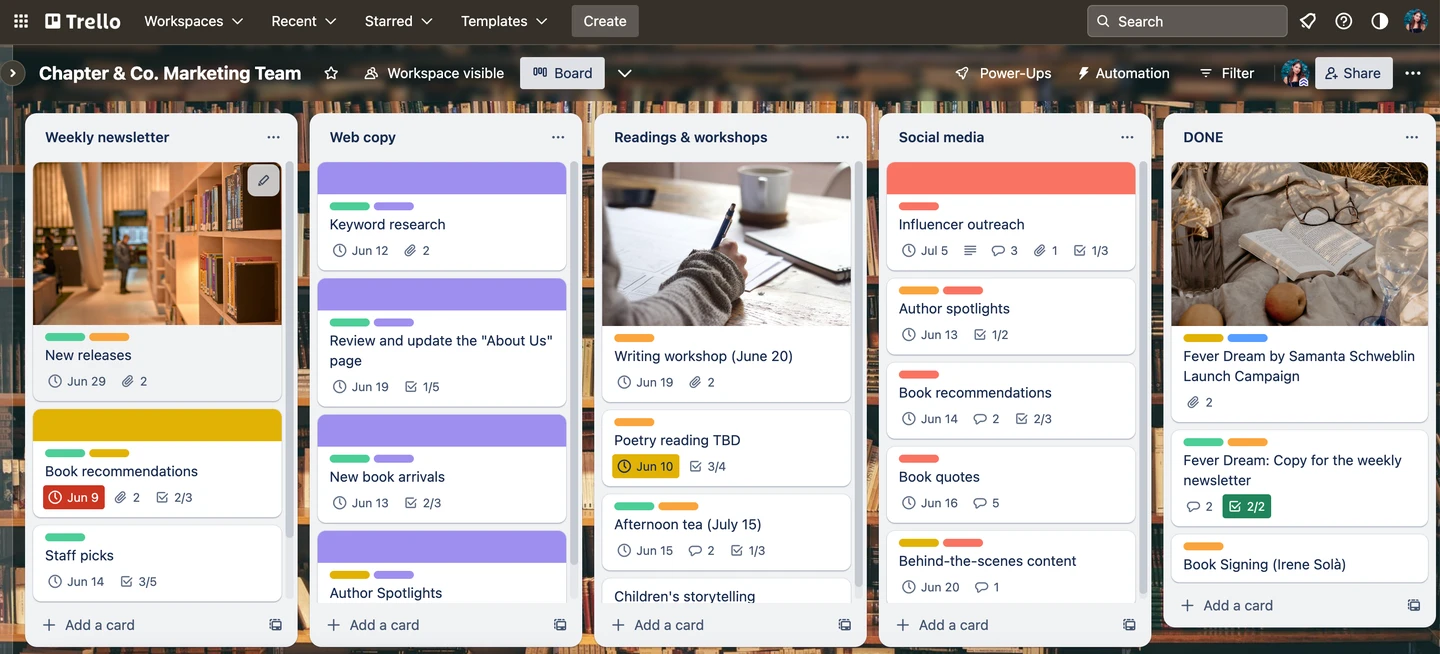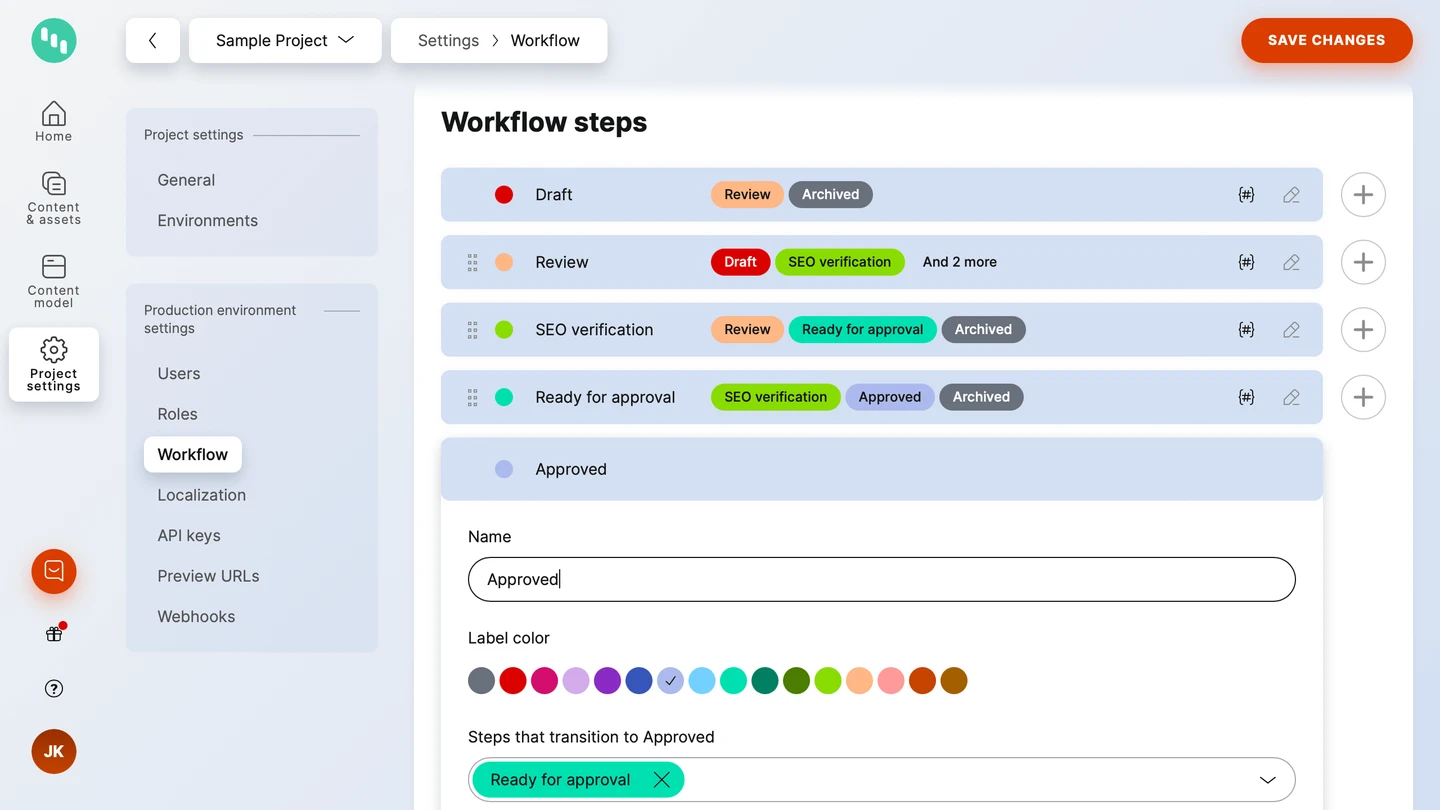4-Step guide to an effective editorial workflow
Why is it important to have an effective editorial workflow in place? And how can you improve your content creation in 4 simple steps?

Published on Jun 9, 2023

Why is it important to have an effective editorial workflow in place? And how can you improve your content creation in 4 simple steps?

Published on Jun 9, 2023

Many companies underestimate the importance of an editorial workflow, which is a huge mistake. Without a well-established workflow, you risk wasting time and skipping crucial phases of content creation. Join us as we explore the four key steps to optimize your editorial workflow, which will help you boost productivity and unleash your content’s true potential.
An editorial workflow is the behind-the-scenes process of bringing your content to life. Every action you perform before posting, including editing videos, writing blog posts, and creating whitepapers, is a component of this pipeline. Its goal is to ensure that your content is top-notch, consistent with your brand, and delivered on time.
Even though an editorial workflow is crucial for any content marketing strategy, the reality is that many teams overlook its importance, which leads to unclear and inefficient workflows. You might have been a part of the “Creative Chaos” team yourself—assignments are thrown around randomly, there is no clear process for reviewing work, and deadlines are tight.
Without a sound process, you and your team waste time and energy and skip crucial phases. If you wish to increase everyone’s productivity and accelerate time to market, you need to establish the right editing workflow.
Now let’s dive right into it—what essential ingredients make up the perfect editorial workflow?
To get things started, you should focus on identifying and breaking down the different stages and steps involved in the content creation process. Where does the creation start? And where and when does it end? You’ll want to include every small step along the way, including:
Once defined, these steps will transform into actionable tasks that can be shared and tracked in your content calendar. Defining every step of the workflow and scheduling tasks ensures efficient execution, maintaining clarity, accountability, and collaboration among team members. This leads to a streamlined and successful content creation process.
The order and steps will change depending on your team and organization. Different projects present different challenges and requirements, plus the size of your team, available resources, and project goals are all factors that can influence the order in which you handle each step.
Keeping all the processes for creating content together once you’ve identified them is crucial so you can track your progress. You can start by using a shared spreadsheet to get your team working together and managing projects right away. Every member of the team can then gain a thorough understanding of the entire project or campaign, including all of the assignments, to-dos, and due dates.
A software program like Trello or Monday might be a true game-changer. Teams can stay organized and on top of things with these project management tools. Nothing will fall through the cracks because tasks can be created, assigned, and tracked with only a few clicks. Knowing that your crucial data is structured and simple to find will give you peace of mind.
Imagine you’re working in the marketing department at Chapter & Co. (a fictional bookstore). They have a lot of tasks, to-dos, and campaigns to handle every day. Without a proper tracking system, it would be difficult to keep track of each item. Check out the example below to get an idea of what their Trello board might look like:

Each task card on the board would feature all the necessary details—due date, the person responsible for completing it, descriptions, attachments, or checklists.
Now that you are aware of what tasks to do and when they need to be done, you should figure out the who. Everyone in your team needs to understand their individual responsibilities and tasks. It’s common for large, distributed teams to lose track of all the tasks within the process, which can result in duplication of work and wasted time. A person overlooking content in your company—be it a content manager or content strategist—must make sure that each task has its owner.
That goes hand in hand with setting up roles within a team. Usually, not only copywriters but also graphic designers or marketing managers have access to the content software where all content is kept. The issue arises when everyone has the same access level, which implies that anybody can modify a piece of content or content type.
Your content management system should let you specify permissions for each team member. If you use a headless CMS solution like Kontent.ai, you can assign a role to each user with just a few clicks. This will give everyone a certain level of permission depending on their job position. Only the right person will be able to view content or access advanced features like managing content types. This way, you can make sure that no difficulties or accidental changes occur in your content.
Is this blog post ready for release? And is this a mere typo, or does this text require proofreading? You have probably experienced it yourself—sometimes you get lost in terms of at which stage certain content is. By setting up workflows, you’ll be able to keep track of every piece of content and its current state.
The process is simple: begin by creating a new article or landing page in the content platform. Keep it in draft mode if it is the first version. After you or someone else in your team completes writing, move the step to proofreading. When the content is ready to go live, you can either schedule it or publish it. Here are some of the workflow steps to get a better picture:

In the Kontent.ai platform, you have the option to create your custom workflows. You can keep it basic or add new workflows like ready for approval or SEO verification. After setting up your project’s workflows, you can rest assured that everyone on your team knows what they need to do.
If you aim to produce awesome content, having an editorial workflow is essential. It’s all about breaking down the content creation process into manageable steps like research, editing, and promotion. To stay on top of things, use a project management tool to track tasks and deadlines. And remember, make sure each task has a designated owner with the right permissions within the content platform.
To foster a collaborative environment, set up workflows that let your team know whether the content is in draft, review, or scheduled stages. A well-established editorial workflow will ramp up your productivity and lead to some awe-inspiring results.

What if we told you there was a way to make your website a place that will always be relevant, no matter the season or the year? Two words—evergreen content. What does evergreen mean in marketing, and how do you make evergreen content? Let’s dive into it.
Lucie Simonova

How can you create a cohesive experience for customers no matter what channel they’re on or what device they’re using? The answer is going omnichannel.
Zaneta Styblova

In today’s world of content, writing like Shakespeare is not enough. The truth is, there are tons of exceptional writers out there. So what will make you stand out from the sea of articles posted every day? A proper blog post structure.
Lucie Simonova